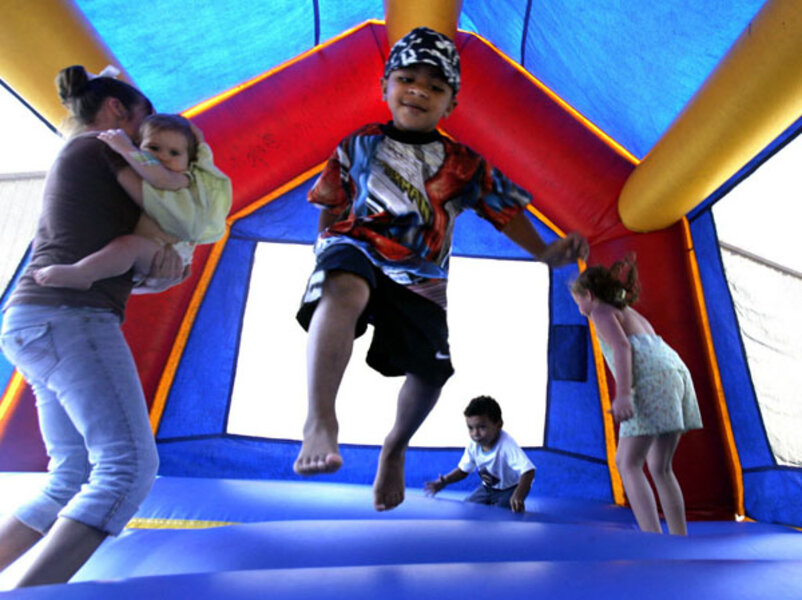Bounce house injuries to kids rise dramatically
Loading...
| CHICAGO
They may be a big hit at kids' birthday parties, but inflatable bounce houses can be dangerous, with the number of injuries soaring in recent years, a nationwide study found.
RELATED: The Top 5 tips for fostering gratitude in kids
Kids often crowd into bounce houses, and jumping up and down can send other children flying into the air, too.
The numbers suggest 30 children a day in the United States are treated in emergency rooms for broken bones, sprains, cuts, and concussions from bounce house accidents. Most involve children falling inside or out of the inflated playthings, and many children get hurt when they collide with other bouncing kids.
As the popularity of the bounce houses has grown, the number of children aged 17 and younger who got emergency-room treatment for bounce house injuries has climbed, too – from fewer than 1,000 in 1995 to nearly 11,000 in 2010. Injuries have doubled just since 2008.
"I was surprised by the number, especially by the rapid increase in the number of injuries," said lead author Gary Smith, director of the Center for Injury Research and Policy at Nationwide Children's Hospital in Columbus, Ohio.
Amusement parks and fairs have bounce houses, and the playthings can also be rented or purchased for home use.
Dr. Smith and colleagues analyzed national surveillance data on emergency room treatment for nonfatal injuries linked with bounce houses, maintained by the U.S. Consumer Product Safety Commission. Their study was published online yesterday in the journal Pediatrics.
Only about 3 percent of children were hospitalized, mostly for broken bones.
More than one-third of the injuries were in children aged five and younger. The safety commission recommends against letting children younger than six use full-size trampolines, and Smith said barring kids that young from even using smaller, home-use bounce houses would make sense.
"There is no evidence that the size or location of an inflatable bouncer affects the injury risk," he said.
Other recommendations, often listed in manufacturers' instruction pamphlets, include not overloading bounce houses with too many kids and not allowing young children to bounce with much older, heavier kids or adults, said Laura Woodburn, a spokeswoman for the National Association of Amusement Ride Safety Officials.
The study didn't include deaths, but some accidents are fatal. Separate data from the product safety commission show four bounce house deaths from 2003 to 2007, all involving children striking their heads on a hard surface.
Several nonfatal accidents occurred last year when bounce houses collapsed or were lifted by high winds.
A group that issues voluntary industry standards says bounce houses should be supervised by trained operators and recommends that bouncers be prohibited from doing flips and purposefully colliding with others, the study authors noted.
RELATED: Top 5 parenting tips for media literacy in preschoolers
Bounce house injuries are similar to those linked with trampolines, and the American Academy of Pediatrics has recommended against using trampolines at home. Policymakers should consider whether bounce houses warrant similar precautions, the authors said.







